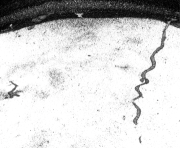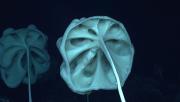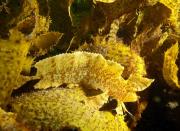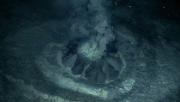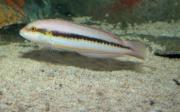Radio Program
Our regular Science and the SeaTM radio program presents marine science topics in an engaging two-minute story format. Our script writers gather ideas for the radio program from the University of Texas Marine Science Institute's researchers and from our very popular college class, Introduction to Oceanography, which we teach to hundreds of non-science majors at The University of Texas at Austin every year. Our radio programs are distributed at to commercial and public radio stations across the country.
A forest fire both destroys and creates. It destroys the plants and animals that live there. But it creates the conditions for a new ecosystem to develop through a process called ecological succession.
Scientists recently reported that a similar process plays out in one of the deepest spots in the oceans. Big blobs of sediments settle on the bottom. That can destroy the organisms that inhabit the region. But the sediments bring nutrients and stir things up in a way that starts a new cycle of life.
About three-quarters of all the antibiotics in use today were developed from a type of bacteria that lives in the soil. But nasty bacteria are becoming more resistant to those treatments. So scientists are scouring the world for sources of new antibiotics—including the ocean floor. And they recently found a couple of good candidates at the bottom of the Arctic Ocean, off the coast of Norway.
A team of astronomers recently reported the possible discovery of a compound in the atmosphere of another planet that could be produced by life. If the compound really is there, then the planet might smell familiar—like a day at the beach.
The weedfish is cryptic. That doesn’t mean that it speaks in riddles or leaves notes that no one can decipher. Instead, it’s easily hidden—it blends into its environment. Divers say it’s so well disguised that even if you find one, it’s impossible to find it again if you look away for even just a second.
There are several species of weedfish. Most of them live around New Zealand or southern Australia. They’re mainly found in shallow waters, living in dense beds of kelp—the “seaweed” that’s anchored to the bottom.
Many volcanoes are among the most majestic sights on the planet: Tall and wide, they belch molten rock or plumes of ash that can tower miles high. But there’s another class of volcano that’s much less impressive. These guys are short and squatty. And they burp out bubbles and blobs of mud, water, and gas. What they lack in majesty, though, they make up for in numbers: more than a thousand have been discovered on land, and many others have been found at the bottom of the ocean.
Using an anvil to smash prey sounds like something Wile E. Coyote would try—unsuccessfully, of course. But some other creatures are a lot more successful at it: fish. More than two dozen species of fish have been seen using “anvils” to smash open their prey. All of them were types of wrasse, a colorful fish found around the world.
Tool use has been observed in birds, mammals, and other animals on land. In marine environments, it’s been seen in octopuses and crabs. And for several decades, the list has included wrasses.
The world has a huge appetite for the batteries that power electric vehicles. Many of the elements needed to make batteries are spread across the ocean floor—especially in the Pacific. They form nodules the size of potatoes that contain a lot of manganese, nickel, and other key metals. But some of the nodules may already be acting as batteries—generating an electric current that produces oxygen.
If you want to avoid sharks, then steer clear of the mountains. No, we’re not talking about the next “Sharknado” movie. It’s underwater mountains—called “seamounts”—that you want to avoid. A recent study found there were 40 times more sharks around a couple of shallow seamounts than in the surrounding open ocean.
Researchers spent about 20 months perusing three seamounts near Ascension Island—a lonely spot in the South Atlantic Ocean. The peaks of two of the seamounts rose to within a few hundred feet of the surface, while the third was deeper.
The deepest part of the Indian Ocean is one of the least explored spots on Earth. It’s also one of the most dangerous. Major earthquakes have rocked it, causing major destruction—including what may be the deadliest natural disaster of the 21st century.
The Sunda Trench—also known as the Java Trench—is a gash in the ocean floor. It curves around the islands of Sumatra and Java, on the eastern edge of the Indian Ocean, between Australia and India. It’s about 2,000 miles long, and up to four and a half miles deep.
Seaweed farms offer many benefits. They provide food for people, habitat for fish and other organisms, and protection against erosion during storms. They can help prevent “red tides,” and could become a source of biofuel.
Seaweed stores carbon in the sediments on the ocean floor. That helps reduce the amount of carbon dioxide in the atmosphere, which is the major cause of our warming climate.

